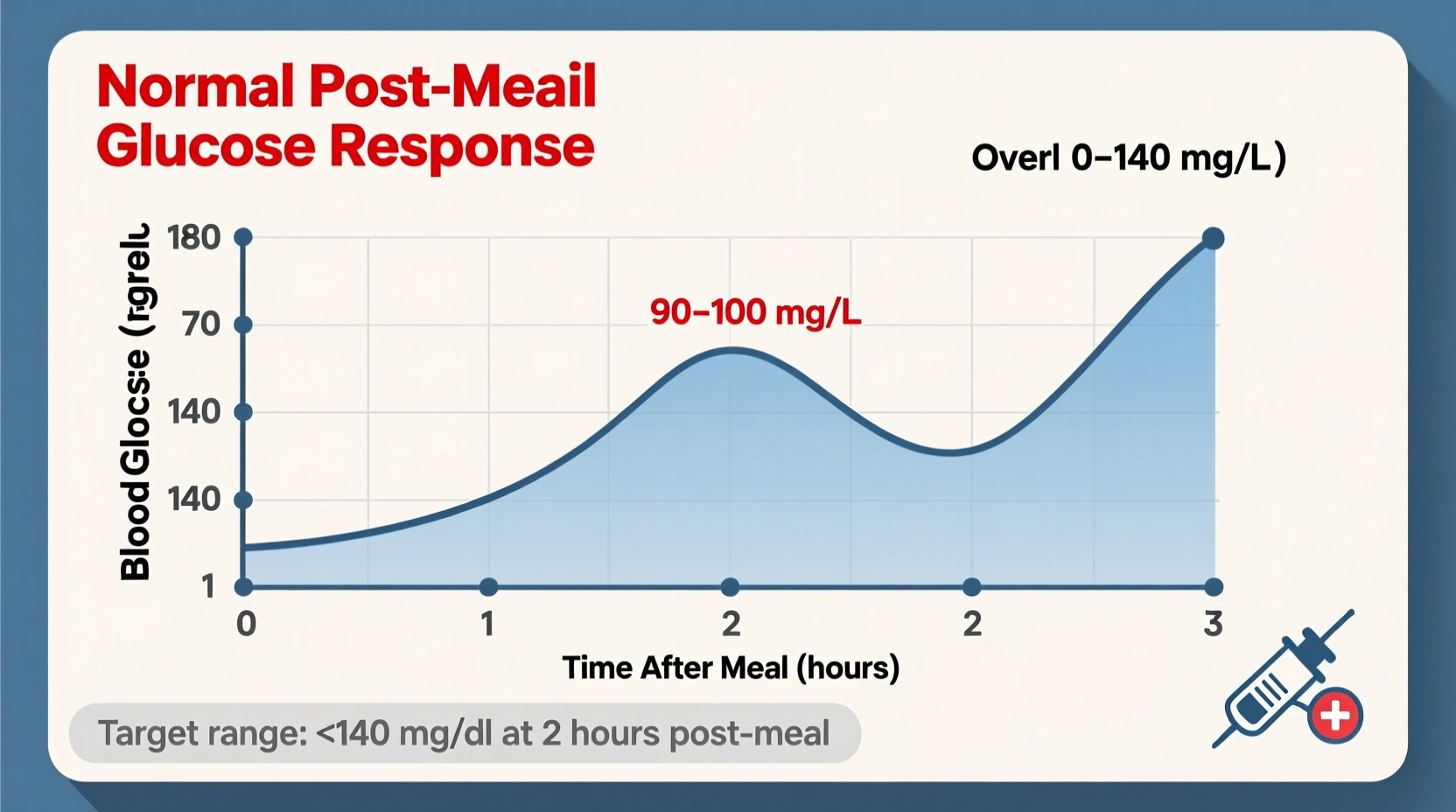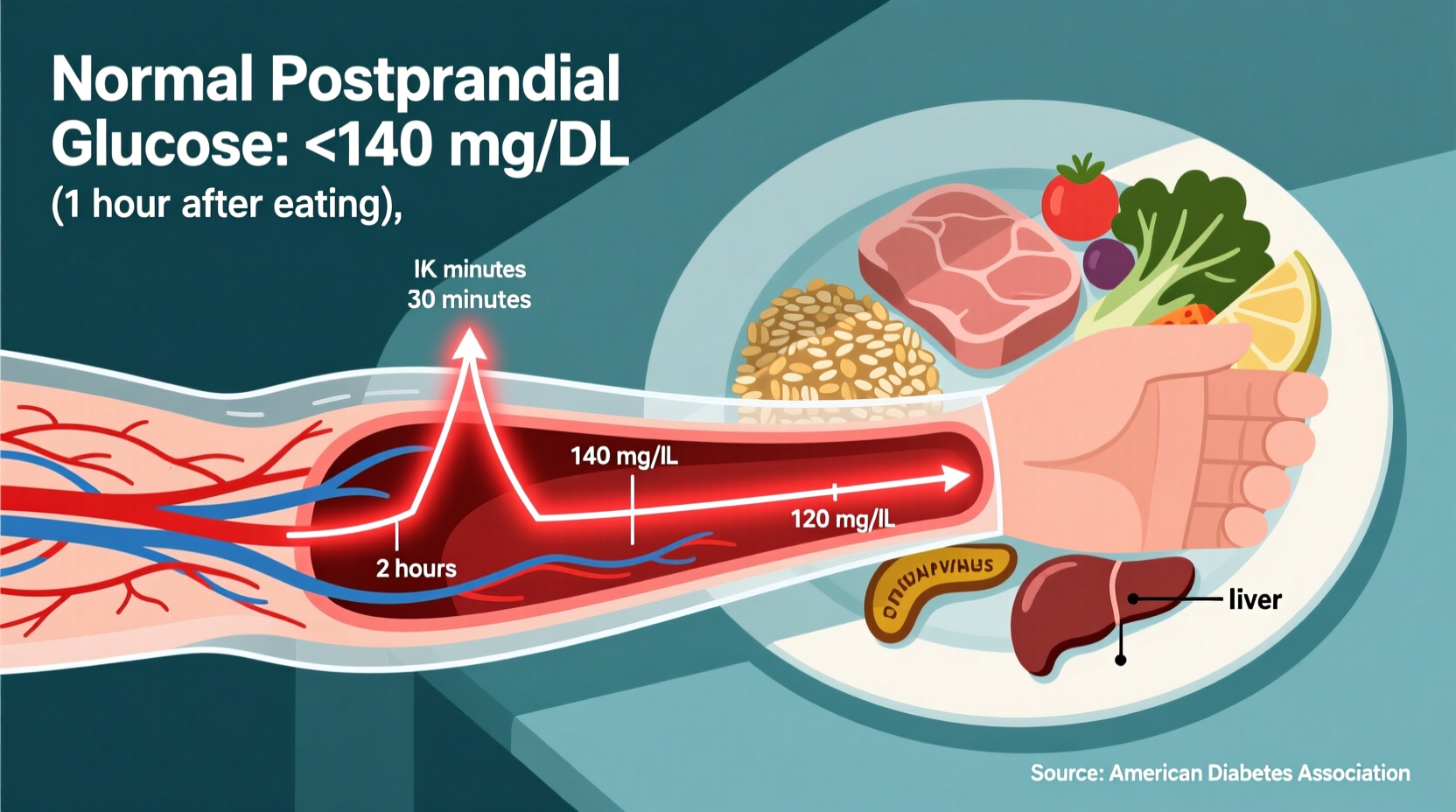Understanding Post-Meal Blood Sugar Dynamics
After eating, your blood glucose naturally rises as your body processes carbohydrates. This temporary increase is normal, but the magnitude and duration of this spike matters significantly for your long-term health. Understanding what happens after you eat helps you make informed decisions about your diet and lifestyle.
When you consume food, especially carbohydrates, your digestive system breaks these down into glucose, which enters your bloodstream. In response, your pancreas releases insulin—a hormone that helps transport glucose from your blood into your cells for energy. In a healthy metabolic system, this process keeps your blood sugar within a safe range.
When to Test Your Blood Sugar After Eating
Timing matters when checking postprandial (after meal) glucose levels. Medical professionals recommend measuring blood sugar starting from when you begin your meal:
- 1 hour after starting your meal: Blood sugar typically peaks during this window
- 2 hours after starting your meal: Blood sugar should be returning toward baseline levels
Testing at the two-hour mark provides the most standardized measurement that healthcare providers use for diagnosis and management.
| Condition | 1-2 Hours After Meal | Measurement Standard |
|---|---|---|
| Normal | <140 mg/dL (<7.8 mmol/L) | American Diabetes Association |
| Prediabetes | 140-199 mg/dL (7.8-11.0 mmol/L) | CDC diagnostic criteria |
| Diabetes | ≥200 mg/dL (≥11.1 mmol/L) | World Health Organization |
| Diabetes Management Target | <180 mg/dL (<10.0 mmol/L) | American Diabetes Association |
Factors That Influence Your Post-Meal Blood Sugar Response
Several elements determine how your blood sugar responds after eating. Understanding these can help you anticipate and manage your glucose levels more effectively:
Food Composition Matters Most
The types of foods you eat significantly impact your blood sugar trajectory. Carbohydrates have the most immediate effect, but protein and fat also play roles in how quickly glucose enters your bloodstream.
- Carbohydrate quality: Whole grains, legumes, and vegetables cause slower, more sustained glucose increases compared to refined carbohydrates
- Fiber content: Higher fiber foods slow digestion and glucose absorption
- Fat and protein: These nutrients can slow gastric emptying, potentially moderating blood sugar spikes
- Food combinations: Pairing carbohydrates with protein, fat, or fiber creates more stable blood sugar responses

Practical Strategies for Managing Post-Meal Glucose
Whether you're monitoring for health reasons or optimizing wellness, these evidence-based approaches help maintain healthier blood sugar levels after eating:
Testing Protocol Recommendations
For accurate tracking, follow these testing guidelines from the Centers for Disease Control and Prevention:
- Test consistently at the same time after meals (usually 1-2 hours)
- Record what you ate along with portion sizes
- Note physical activity before and after eating
- Track results over time to identify patterns
Dietary Approaches That Work
Research published in the American Diabetes Association's journal shows these eating patterns help moderate post-meal glucose:
- Sequence eating: Consuming vegetables and protein before carbohydrates reduces glucose spikes
- Portion awareness: Smaller meal sizes create more manageable glucose responses
- Vinegar preloading: Some studies show consuming vinegar before meals may improve glucose response
- Mindful eating: Slower eating pace allows better recognition of fullness signals
When to Consult a Healthcare Professional
While occasional elevated readings may not indicate a problem, certain patterns warrant medical evaluation. According to the National Institute of Diabetes and Digestive and Kidney Diseases, consult your doctor if:
- You consistently measure above 140 mg/dL two hours after meals
- You experience symptoms like excessive thirst, frequent urination, or unexplained fatigue
- You have risk factors for diabetes (family history, overweight, physical inactivity)
- Your blood sugar levels show significant variability without explanation
Regular monitoring provides valuable data for early detection of potential issues. Your healthcare provider can help interpret your results in context of your overall health profile.
Common Questions About Post-Meal Blood Sugar
What causes high blood sugar after eating even when I eat healthy foods?
Even healthy carbohydrates can raise blood sugar. Individual responses vary based on insulin sensitivity, pancreatic function, stress levels, sleep quality, and other metabolic factors. Some people naturally experience higher post-meal glucose despite healthy eating habits, which may indicate prediabetes or early diabetes.
How long after eating does blood sugar return to normal?
In healthy individuals, blood sugar typically returns to pre-meal levels within 2-3 hours after eating. The exact timeframe depends on meal composition, portion size, physical activity, and individual metabolic factors. People with insulin resistance or diabetes may experience longer recovery periods.
Does what I eat for breakfast affect my blood sugar all day?
Yes, research shows that your first meal can influence glucose responses throughout the day. A breakfast high in refined carbohydrates may cause larger blood sugar fluctuations later, while a balanced breakfast with protein, healthy fats, and fiber creates more stable glucose patterns. This phenomenon is known as the 'second meal effect.'
Can drinking water after meals lower blood sugar?
Water itself doesn't directly lower blood sugar, but staying properly hydrated supports kidney function, which helps your body eliminate excess glucose through urine. Dehydration can actually concentrate blood sugar levels. Drinking water before and during meals may also help with portion control and prevent overeating.











 浙公网安备
33010002000092号
浙公网安备
33010002000092号 浙B2-20120091-4
浙B2-20120091-4